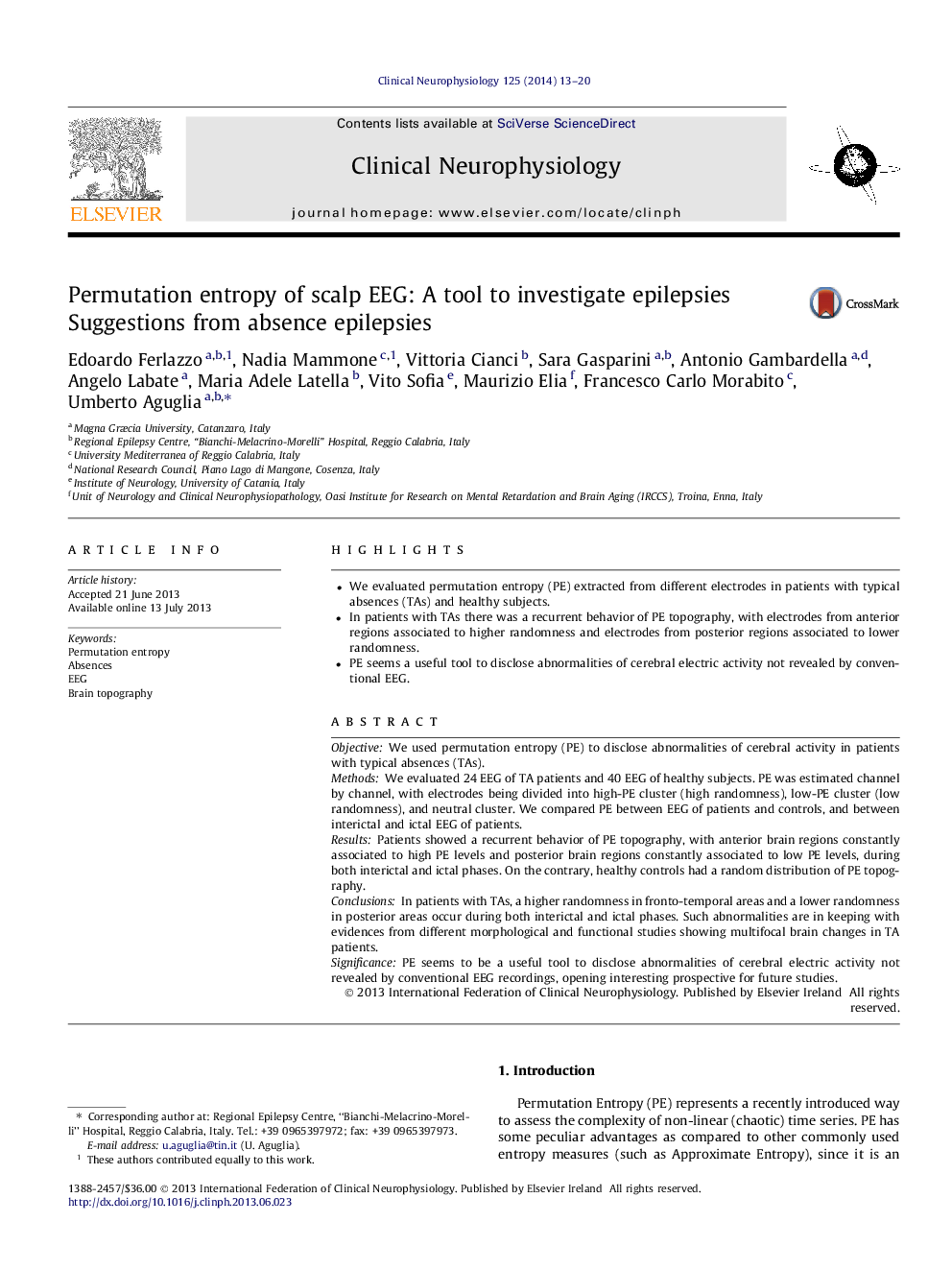| Article ID | Journal | Published Year | Pages | File Type |
|---|---|---|---|---|
| 3043629 | Clinical Neurophysiology | 2014 | 8 Pages |
•We evaluated permutation entropy (PE) extracted from different electrodes in patients with typical absences (TAs) and healthy subjects.•In patients with TAs there was a recurrent behavior of PE topography, with electrodes from anterior regions associated to higher randomness and electrodes from posterior regions associated to lower randomness.•PE seems a useful tool to disclose abnormalities of cerebral electric activity not revealed by conventional EEG.
ObjectiveWe used permutation entropy (PE) to disclose abnormalities of cerebral activity in patients with typical absences (TAs).MethodsWe evaluated 24 EEG of TA patients and 40 EEG of healthy subjects. PE was estimated channel by channel, with electrodes being divided into high-PE cluster (high randomness), low-PE cluster (low randomness), and neutral cluster. We compared PE between EEG of patients and controls, and between interictal and ictal EEG of patients.ResultsPatients showed a recurrent behavior of PE topography, with anterior brain regions constantly associated to high PE levels and posterior brain regions constantly associated to low PE levels, during both interictal and ictal phases. On the contrary, healthy controls had a random distribution of PE topography.ConclusionsIn patients with TAs, a higher randomness in fronto-temporal areas and a lower randomness in posterior areas occur during both interictal and ictal phases. Such abnormalities are in keeping with evidences from different morphological and functional studies showing multifocal brain changes in TA patients.SignificancePE seems to be a useful tool to disclose abnormalities of cerebral electric activity not revealed by conventional EEG recordings, opening interesting prospective for future studies.
